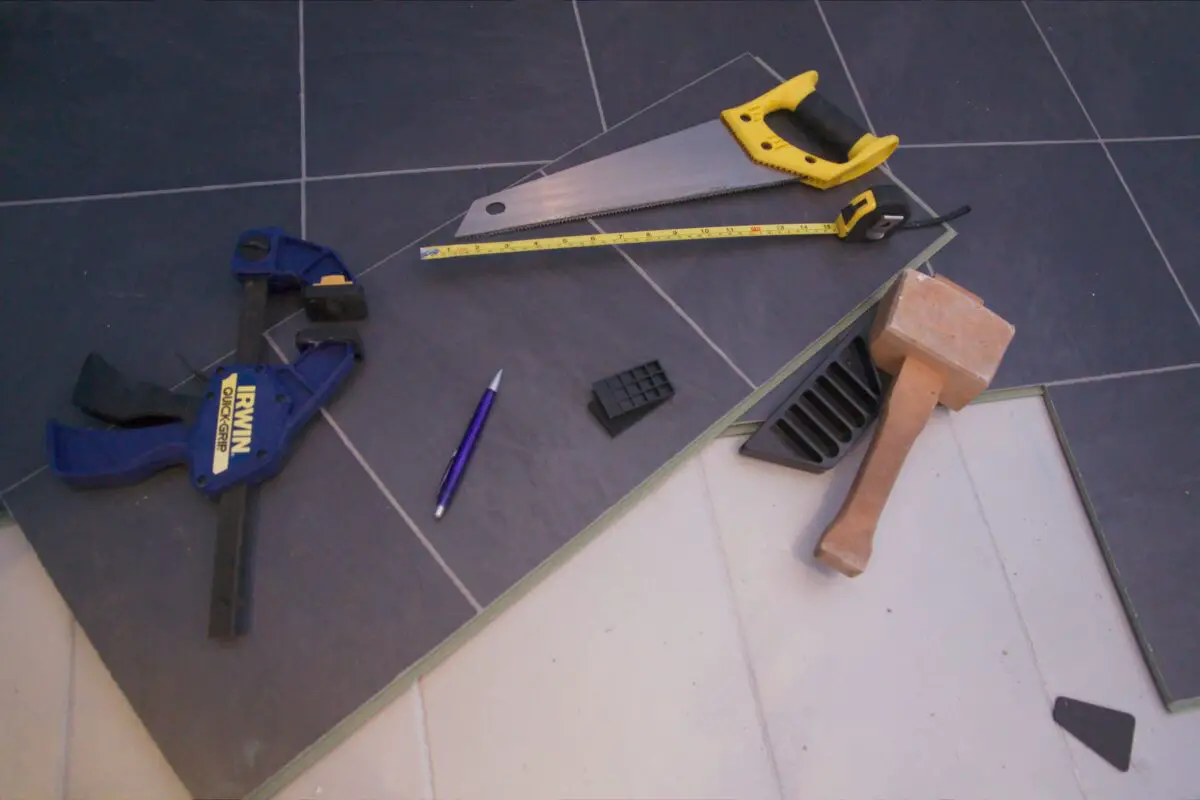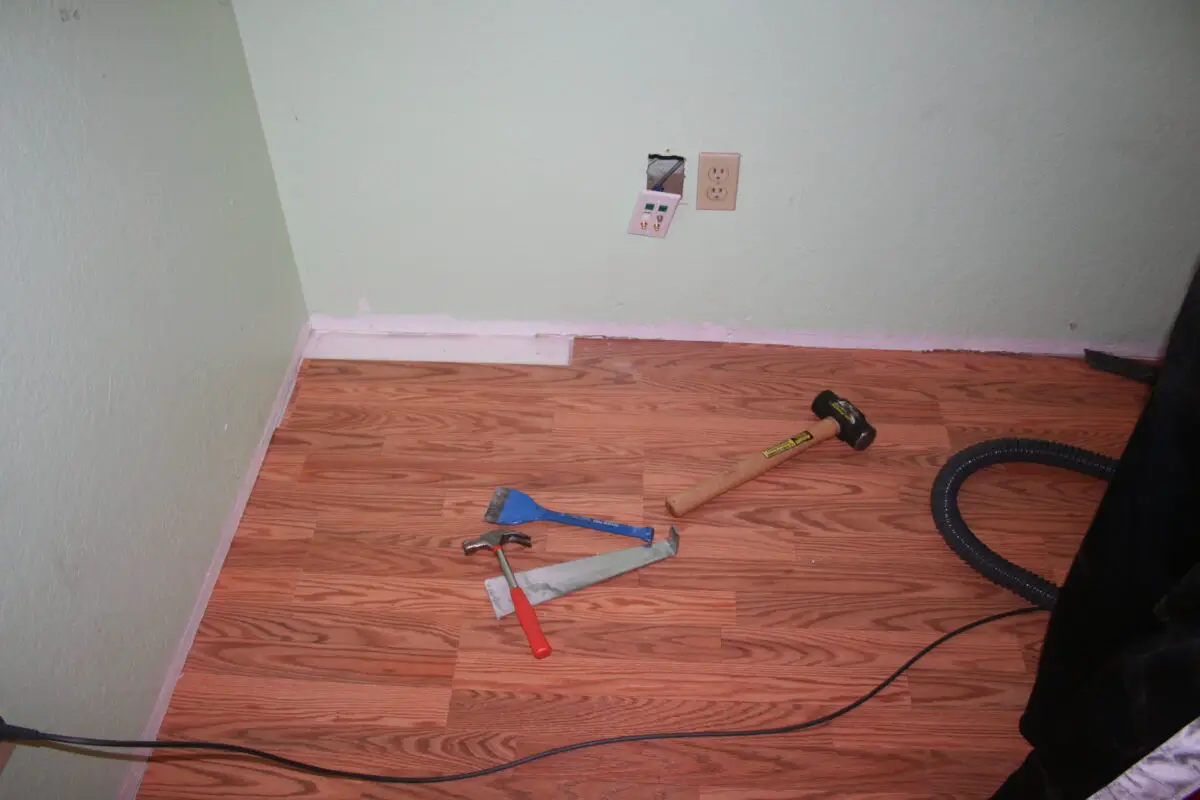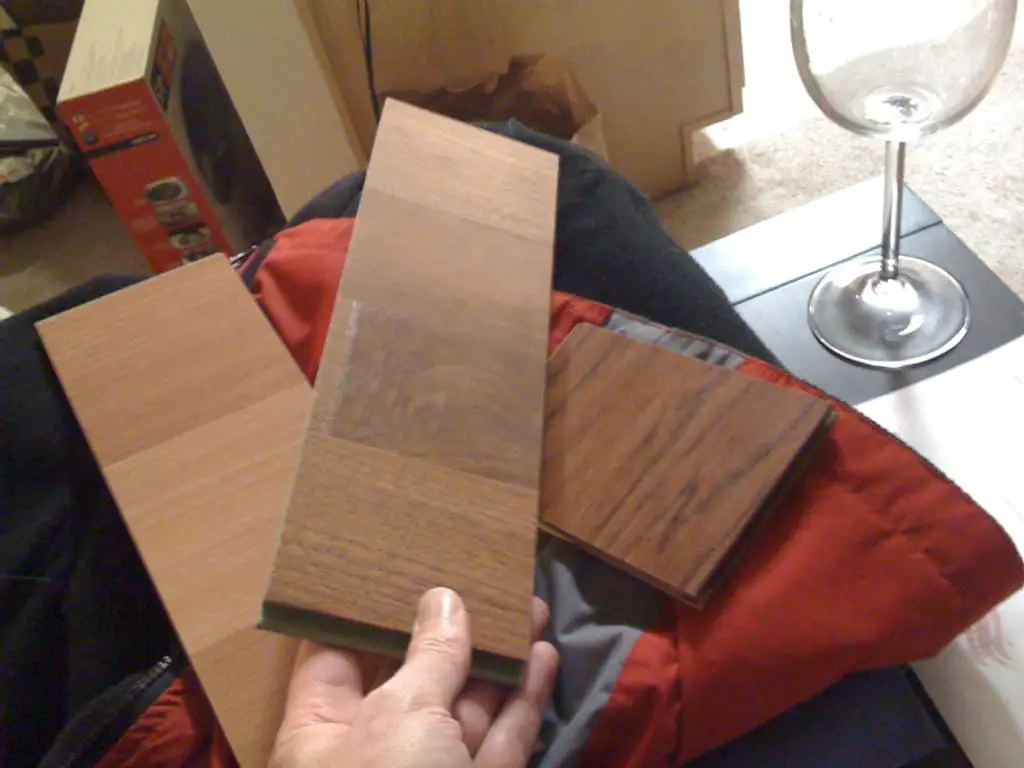Homeowners can transform living spaces through proper flooring. However, this requires learning the right way and tools to cut the flooring to fit the space.
Fear not, fellow DIYers! As a seasoned expert in these types of projects, I’m here to guide you through the process so you can achieve a professional-looking finish. I’m sharing my knowledge based on my experience on how to cut laminate flooring lengthwise, including the tools, workspace preparation, and proper cutting techniques.
How to Cut Laminate Flooring Lengthwise
To cut laminate flooring lengthwise, you must first measure and mark the laminate and use a jigsaw or circular saw to cut along the straight line. Use a utility knife to trim the end pieces, evenly fitting the required space.
Flooring has become increasingly popular in recent years due to its affordability, durability, and ease of installation. In the following sections, we’ll dive into the step-by-step process, so you can apply these skills and confidently transform your living space with beautiful flooring.
Techniques in Cutting Laminate Flooring Lengthwise
Whether you use a circular saw, jigsaw, or handsaw, you need the proper approach to cut laminate flooring lengthwise. Happy DIY-ing!
| Method | Proper Technique |
| Using a circular saw | Push the saw slowly and smoothly along the surface of the laminate flooring. |
| Using a jigsaw | Start at the edge of the flooring and push the blade slowly through it. |
| Using a handsaw | Draw the saw backward over the cutting line, then cut slowly and steadily throughout the mark. |
Step 1: Prepare the Required Tools and Materials
Before we begin, let’s gather the necessary tools and materials. The key to achieving clean, precise cuts when cutting flooring lies in using the right tools and techniques.
In my experience, a few essential tools like a high-quality saw blade, measuring tools, and a steady hand can make a great difference in getting the job done right.
My go-to equipment for cutting lengthwise and even at a 45-degree angle is a circular saw or a handsaw. I prefer to use those with at least 18 teeth per inch to avoid chipping the laminate. These materials are also vital for this project.
- Straightedge or ruler
- Tape measure
- Pencil or chalk for marking
- Safety gear like goggles and gloves
Step 2: Take Safety Precautions
A study shows that more than 290,000 home-improvement injuries required an ER visit. Before starting, it’s essential to prioritize safety while cutting flooring materials so you can avoid hospital visits.
- I recommend wearing safety goggles to protect your eyes from debris and dust. Additionally, using work gloves can help prevent slips and cuts when handling the materials.
- When using power tools such as circular or table saws, ensure a firm grip on the tool to avoid accidents.
- Keep your fingers away from the blade and follow the manufacturer’s instructions for proper usage.
- Don’t forget to unplug the power tools when making adjustments or taking breaks.
Step 3: Prepare the Workspace
Preparing the workspace is crucial for a successful DIY project.
- Ensure there is ample space to measure and cut the laminate flooring without obstructions.
- Place the laminate on a stable and flat surface, such as a workbench or sawhorse, to support it during cutting.
- Remember to use C-clamps or other supports to prevent the laminate from shifting while cutting.
Step 4: Measure and Mark the Laminate
Now comes the crucial part— measuring and marking the laminate for cutting.
- Carefully measure the length required, and use a pencil or chalk to make a small mark on the edge of the laminate.
- Alternatively, draw a straight measurement line across the face of the laminate using a straightedge or ruler.
- Double-check your measurements before proceeding to the cutting step to avoid any mistakes or waste of material.
Step 5: Choose the Appropriate Cutting Method
Choosing the right method for a clean and precise cut is important when cutting flooring. In this section, I’ll share my experience using a circular saw, a jigsaw, and a handsaw to get the job done.
Using a Circular Saw
In my opinion, a circular saw is one of the most efficient tools for cutting flooring materials. A circular saw is also efficient in cutting angles. I suggest using a blade mainly designed for cutting laminate material to get the best results.
- Measure and mark the cutting line before starting, and wear eye protection.
- Use the central lever to set the blade to the desired cutting depth.
- Push the saw slowly and smoothly along the surface of the flooring. Use both hands to maneuver the saw straight down the cut line.
- Make sure the laminate piece is properly supported and cut slowly to minimize chipping.
Using a Jigsaw
A jigsaw is another excellent option for cutting flooring lengthwise. Based on my previous works, a jigsaw offers more control than a circular saw, especially when making intricate cuts. Be sure to choose a jigsaw blade with downward-oriented teeth to reduce chipping and tear-out.
- Secure the laminate piece firmly to your workbench.
- While this is an optional step, you can install spaces along the walls or obstacles in the room. This is essential for leaving enough space for expansion as the laminate planks tend to expand and contract over time due to humidity changes.
- Using the jigsaw, start at the edge of the flooring and push the blade slowly through it.
- Follow the marked line carefully to ensure a clean cut.
Using a Handsaw
If you don’t have access to power tools, don’t worry. Choose a handsaw with at least 18 teeth per inch to avoid chipping.
- Mark the cutting line and securely clamp the laminate piece to the work surface.
- Double-check the subfloor for any uneven surfaces. Use a straightedge to spot areas higher or lower than 1/8-inch, which can cause issues in the installation process.
- Make a small cut in the flooring. Draw the saw backward over the cutting line.
- Cut slowly and steadily, applying even pressure throughout the line.
Despite requiring more effort than power tools, a handsaw can still provide satisfactory results if used with care.
A handsaw is also a good tool if you have to cut laminate that is already installed.
Step 6: Finish the Cut Edges
Laminate floors generally have scratch and moisture-resistant surfaces. Despite that, you’ll want to ensure the cut edges look clean and professional.
- One way I achieve this is by using a fine-toothed saw. Using a blade with downward-oriented teeth is vital, especially when placing the laminate board face-up during the cut.
- I make sure to trim any end pieces properly. You can use transition strips to get those clean cuts on the edges. They’re great for situations where you need to transition between different types of flooring, like laminate and tile.
- Alternatively, use a utility knife, which is also suitable for cutting laminate flooring without using a saw. I also use it when cutting a wooden dowel, which is effective.
Remember, taking the time to finish the cut edges will result in a more polished and professional-looking final product. You might also need to sand the cutting edges just like how you sand concrete to get a clean finish. Trust me, your DIY project will leave you feeling proud of your work and the results achieved.
Related Questions
Which Saw Is Best for Cutting Laminate Flooring?
While the best saw for cutting laminate flooring depends on the specific needs of my project, some options include a table saw, circular saw, handsaw, miter saw, or jigsaw. Circular saws and jigsaws are versatile, while table and miter saws offer greater precision.
What Length Should I Cut My Flooring?
Whether using a handsaw or a jigsaw, it’s best to keep cut pieces no less than 16 inches long. However, this may also depend on the available space. Consider how the rows of laminate planks will look, especially since they should have a staggered, sawtooth appearance.
Can I Cut an Installed Flooring Lengthwise?
Yes, you can cut installed flooring, although I would be cautious and take proper measurements to avoid damaging the surrounding material. I recommend using a multi-tool or a jigsaw with a fine-tooth blade to make clean cuts in tight spaces while ensuring a lengthwise cut.
Conclusion
In summary, cutting laminate flooring lengthwise can be achieved using the right tools and techniques. Remember to measure twice and cut once to ensure a precise fit. With a bit of patience and practice, I believe that you can successfully cut and install your flooring project to create a stunning and professional-looking result.




